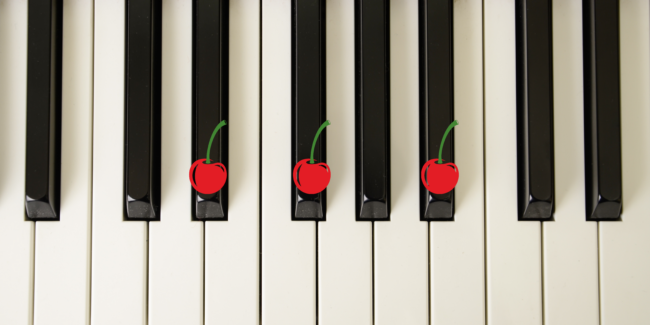Playing the Eb Minor Chord (D# Minor) on Piano

Take your piano playing up a level and learn everything you need to start playing the Eb minor chord.
Playing melodies on the piano is cool, but things get serious when you start playing chords. Chords carry with them so many variations, positions, and permutations. This can be exciting but also sometimes overwhelming.
This post will equip you with all the music theory tools to understand and play Eb/D# minor.
Chords and inversions.
A chord is when you play two or more notes simultaneously. A three-note chord is the most common, called a triad.
Most chords start by being either major or minor. You make a major chord by taking the major scale’s first, third, and fifth notes. It contains two intervals, a major third and then a minor third.
You also build minor chords from the first, third, and fifth notes of a major scale, but the third is flat (lower by a semitone). It has the same two intervals in reverse order–a minor third and a major third.
Play these notes in a different order to create an inversion. Triads will appear in three different positions:
Root position: 1, 3, 5.
First inversion: 3, 5, 1.
Second inversion: 5, 1, 3.
Understanding Eb minor.
To figure out an Eb minor chord, we should start from the Eb major scale.

Take the first, third, and fifth degrees of the scale to make an Eb major chord:

Now flatten the third degree of the scale (which is the second note of the chord):

First inversion of Eb minor.
The first inversion is when you play the chord in this order:
3, 5, 1.
So this is Eb minor in first inversion:

Second inversion of Eb minor.
The second inversion is when you play the chord like this:
5, 1, 3.
Ebm in second inversion:

Want to learn more about chords? You can read up on them here.
Eb’s alter ego: D#
Depending on the context, you might know that the note Eb is also called D#. The rule is that you cannot have the same letter appear twice in a scale or chord.
In the case of D#, this makes for clunky lettering. You saw above that the third note of the Eb major scale is G, but in the context of D, the third is always F. We call it F double sharp (or Fx, which means higher by two semitones) in this situation. The same happened with the letter C.
We’ve compiled all of the above tables with the alternative lettering of D#. Don’t get confused, though–they still sound the same.
D# major scale:

D# major chord:

D# minor chord:

D# minor first inversion:

D# minor second inversion:

Play Eb/D# minor in popular songs.
Want to play some popular songs that use the Eb/D# minor chord? Check these out:
- Civil War – Guns n Roses
- No More Sorrow – Linkin Park
- Dumb – Nirvana
- River Lea – Adele
So what are you waiting for?
Don’t waste any time! The faster you overcome your chord conniptions, the sooner you’ll be free as a bird on your instrument. Try playing Ebm/D#m with this post by your side. Make sure you get the Simply Piano app–it offers interactive learning and guidance for playing this chord and more!









